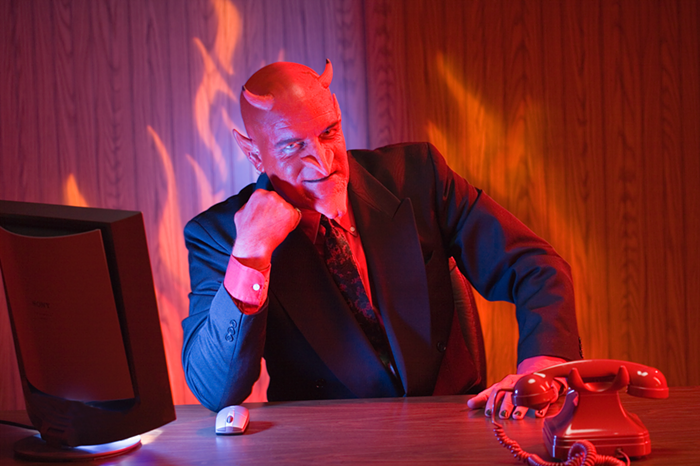
- Courtesy of PICA's Image Bank
Brian Lund's untitled TBA contribution renders Oliver Stone's Wall Street into 2-D, choreographic diagrams. Remembering scenes from the film in graphite tick marks, colored squares and circles, and layered lines, Lund notates characters and their movements. These tick marks, shapes, and lines are at times used to record specific scenes from the movie, and at other times used to recast these scenes into dance numbers, honing in on major plot points and repeating them for emphasis. The diagrams on display at PNCA first appear as loose geometric sketches, though later emerge as the schematics of greed.
Wall Street follows an archetypal curve of greed: the young and eager stockbroker Bud Fox (Charlie Sheen) is enticed by high-stakes broker Gordon Gekko (Michael Douglas) to compromise his integrity for the spoils of an inside trader's treasure chest. Fox quickly achieves vast wealth, though in the end is prosecuted for trading insider tips, affirming his blue collar family background and the lessons his father taught him growing up (there's no such thing as quick money).
Lund represents the entire film, forwards and then backwards, in the nest-like diagram, "Double Wall Street (1500+ Edit Cuts) (Version One)." In the upper-left of the composition, the opening scene is translated to a few scant pencil marks coupled with the text, "NY City at Dawn." A few inches lower, twenty edits are accounted for, clarified with brief descriptions: "Staten Island Ferry," "Subway Train," "Crowd-- Bud Fox." Edits 30-40 make a curve at the bottom of the paper canvas, leading upwards to establish a snake-like pattern which curves and coils— up and down— across the page. The center of the piece represents the end of the movie, and then the edits are inscribed again from last to first, as if put to a mirror, leading back to the beginning of the film with "NY City at Dawn" written for a second time in the bottom-right.
Highlighting the film's greed element, "Bud Fox Meets Gordon Gekko (40+ Repeated Sequences From Wall Street)" focuses on a single moment— when Fox and Gekko first trade insider stock tips in Gekko's high-rise office— and repeats its diagrammed movements upwards of forty times. The composition looks likes a mountain built of dots and lines, triangular, with "126 [int.-- Gekko's office]" written at the apex, and "Bud leaves Gekko's office-- 170" at the base. "Gives insider tip" is scribbled dozens of times between the bookended stage directions, mutating Fox's turning point into a chorus; the sequences of avarice droning to advertise their connection to Fox's fate (jail).
Also using repetition to zoom in on particular moralistic transactions, Lund translates scenes from the movie into choreographed dances. Lund imagines chorus lines of "24 Bud Foxes" and "20 Gordon Gekkos" dancing in pinwheel and pyramid formations. When a character is multiplied in this way, their actions enacted with multiple bodies, it calls attention to their universality— becoming a gospel truth of secular proportions.
Though, even with all these successful and creative manipulations of cinema, Lund's exhibit was a bit exclusive. First off, there's no key to tell viewers what Lund's little circles, squares, tick marks, x-marks, etc. stand for. After taking some time with the series you'll understand that these marks are symbols for characters and the way they move around, but which symbols stand for what? It seems clear that the point of this exhibit is to communicate the archetypes of greed from Wall Street, though in excluding a key for Lund's symbols, the exhibit comes off as intentionally confusing, withholding an invitation to "get it."
Additionally, there's a curatorial fail-of-proximity. In the next room over, a looped video installation with a grating soundtrack is on display. If you spend enough time in Lund's exhibit to "get it," you'll be sure to hear this soundtrack a half-dozen times. About halfway through my time at the exhibit, I was ready to go to the neighboring room and start ripping wires from speakers. While this doesn't have anything to do with Lund's diagrams, it made it especially hard to take everything in.
Last but not least, if you're going to check out Lund's exhibit— free to the public and running at PNCA through Oct. 23rd— I suggest watching Wall Street beforehand. It'll help with the whole "getting it" factor, and it'll also allow you distinguish between which diagrams directly represent scenes from the movie, and which are re-imaginings.












